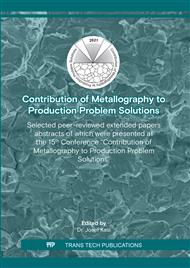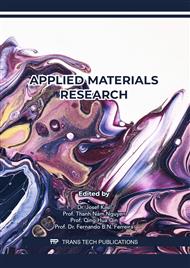p.87
p.93
p.99
p.107
p.113
p.119
p.127
p.133
p.139
In Vitro Corrosion Study of Selected Laser Melted WE43 Magnesium Alloy in Hank ́s Balanced Salt Solution
Abstract:
Magnesium (Mg) and its alloys have been intensively investigated as potential biocompatible materials with appropriate structural, mechanical and corrosion properties for preferable orthopedic applications. Selective Laser Melting (SLM) technique was developed for the fabrication of three-dimensional components with high structural integrity at a low cost and is compatible with various materials, including biocompatible magnesium alloys. In this study, WE43 magnesium alloy samples produced by SLM technique were examined by in vitro static test in Hank's balanced salt solution (HBSS) under physiological temperature conditions for six days. A hydrogen evolution method for the estimation of the corrosion rate was used. The phase composition of samples before and after the immersion test was investigated by X-ray diffraction (XRD). The surface morphology and chemical composition of the initial material and tested samples were characterized by scanning electron microscope (SEM) equipped with energy dispersive X-ray spectroscopy (EDX).
Info:
Periodical:
Pages:
113-118
Citation:
Online since:
June 2022
Keywords:
Price:
Сopyright:
© 2022 Trans Tech Publications Ltd. All Rights Reserved
Share:
Citation:



